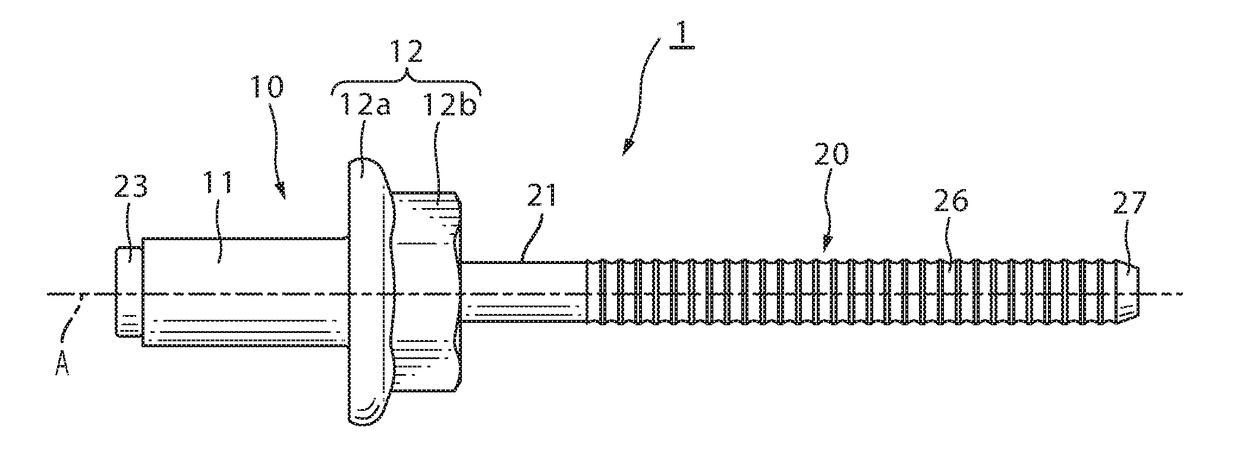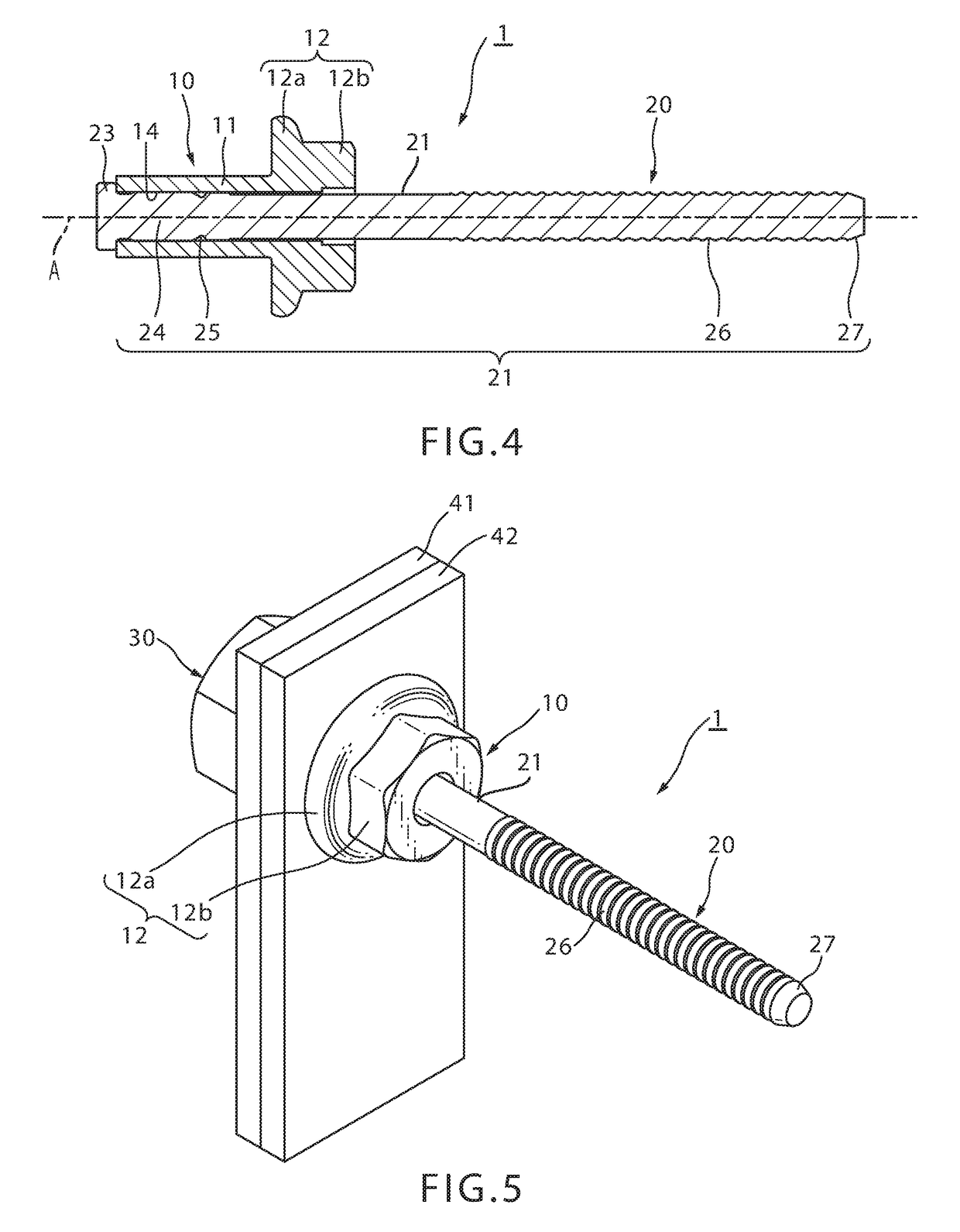Fastening structure and fastening method
a technology of fastening structure and fastening method, which is applied in the direction of threaded fasteners, screwed fasteners, manufacturing tools, etc., can solve the problems of varying the tensile force needed to break the workpiece, workpiece deformation, and time and effort required to machine the workpiece to be attached, and achieves strong fastening force
- Summary
- Abstract
- Description
- Claims
- Application Information
AI Technical Summary
Benefits of technology
Problems solved by technology
Method used
Image
Examples
Embodiment Construction
[0048]Next, a blind rivet subassembly 1 according to an embodiment of the present invention will be explained by referring to the Drawings. FIG. 1 is a front elevational view of blind rivet subassembly 1 of the present invention; FIG. 2 is a left side view; and FIG. 3 is a right side view. FIG. 4 is a cross-sectional view of the blind rivet 1 along line A-A of FIG. 2.
[0049]Blind rivet subassembly 1 is provided with a rivet body 10 and a mandrel 20.
[0050]Rivet body 10 includes a hollow tubular sleeve 11 and a rivet head 12 which is formed on one end of sleeve 11, having a larger diameter than sleeve 11. Rivet head 12 has a flange 12a and a polygonal portion 12b which is contiguous to flange 12a, and is formed on an end of the rivet body on the opposite side of the flange from the sleeve.
[0051]The outer diameter of flange 12a is larger than the outer diameter of sleeve 11 so that it abuts the surface of a workpiece 42 over a wide area (FIG. 5). Polygonal portion 12b is formed on the e...
PUM
| Property | Measurement | Unit |
|---|---|---|
| pulling force | aaaaa | aaaaa |
| force | aaaaa | aaaaa |
| force | aaaaa | aaaaa |
Abstract
Description
Claims
Application Information
 Login to View More
Login to View More - R&D
- Intellectual Property
- Life Sciences
- Materials
- Tech Scout
- Unparalleled Data Quality
- Higher Quality Content
- 60% Fewer Hallucinations
Browse by: Latest US Patents, China's latest patents, Technical Efficacy Thesaurus, Application Domain, Technology Topic, Popular Technical Reports.
© 2025 PatSnap. All rights reserved.Legal|Privacy policy|Modern Slavery Act Transparency Statement|Sitemap|About US| Contact US: help@patsnap.com



